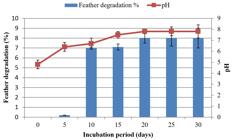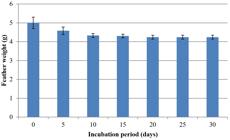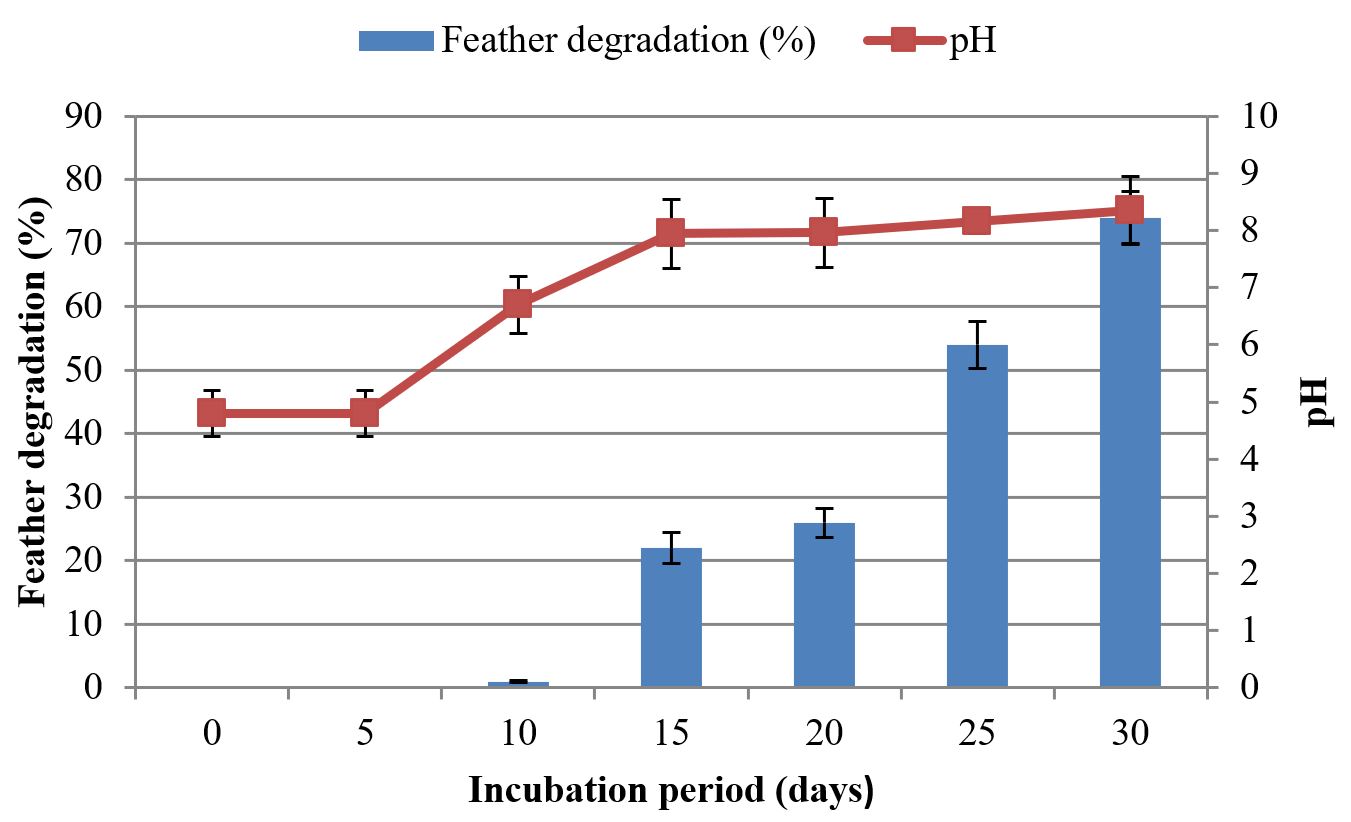Abstract
Poultry industry is expanding rapidly and producing million tons of feather waste annually. Massive production of keratinaceous byproducts in the form of industrial wastes throughout the world necessitates its justified utilization. Chemical treatment of keratin waste is proclaimed as an eco-destructive approach by various researchers since it generates secondary pollutants. Keratinase released by a variety of microbes (bacteria and fungi) can be used for the effective treatment of keratin waste. Microbial degradation of keratin waste is an emerging and eco-friendly approach and offers dual benefits, i.e., treatment of recalcitrant pollutant (keratin) and procurement of a commercially important enzyme (keratinase). This study involves the isolation, characterization, and potential utility of fungal species for the degradation of chicken-feather waste through submerged and solid-state fermentation. The isolated fungus was identified and characterized as Aspergillus (A.) flavus. In a trial of 30 days, it was appeared that 74 and 8% feather weight was reduced through sub-merged and solid-state fermentation, respectively by A. flavus. The pH of the growth media in submerged fermentation was changed from 4.8 to 8.35. The exploited application of keratinolytic microbes is, therefore, recommended for the treatment of keratinaceous wastes to achieve dual benefits of remediation.
Keywords: Aspergillus flavus; biodegradation; bioremediation; economical bioremediation; keratinase; poultry industry

 Fungal decomposition of chicken-feather waste in submerged and solid-state fermentation
Fungal decomposition of chicken-feather waste in submerged and solid-state fermentation Thumbnail
Thumbnail
 Thumbnail
Thumbnail
 Thumbnail
Thumbnail
 Thumbnail
Thumbnail
 Thumbnail
Thumbnail
 Thumbnail
Thumbnail
 Thumbnail
Thumbnail
 Thumbnail
Thumbnail
 Thumbnail
Thumbnail








